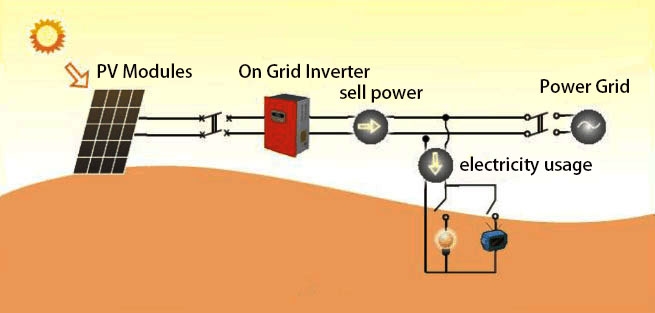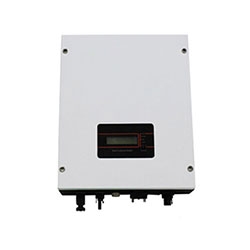With the rapid development of renewable energy sources, solar photovoltaic (PV) power systems have become a popular choice in the clean energy sector. The on-grid inverter is a crucial component in solar power systems, playing a key role in converting solar power into alternating current (AC) that can be used in power networks. The inverter store will provide an in-depth look at how grid-connected inverters work, their application areas, and technology trends to help readers better understand this technological component that plays an important role in the clean energy transition.
Introduction to On Grid Inverters
Solar photovoltaic (PV) systems convert solar energy into direct current (DC) electricity via photovoltaic cells. However, since most power networks use alternating current (AC), a device is needed to convert DC to AC, which is where on grid inverters come in. On grid inverter is a device that converts the DC power output from the solar cells into AC power that meets the requirements of the grid and then feeds it back into the grid, and is the centerpiece of energy conversion and control for grid-connected photovoltaic systems.
Due to the special nature of the input energy of the on grid inverter, its output power has the characteristics of discontinuous uncertainty, during the day with the intensity of sunlight, temperature, and other factors changing, and no energy output at night, the power grid has a periodic impact. On-grid inverter is a kind of electronic equipment that can convert DC power into AC power. Its basic functions include rectification, inversion, and voltage regulation. Through this series of operations, the on-grid inverter can change the DC power generated by the solar PV system into the AC power required by the power network.

Principle of Operation
DC Input: The DC power generated from the solar PV cells enters the on grid inverter.
Rectification: The DC is converted into an intermediate DC, usually using a rectifier bridge circuit.
Inverter: Converts the intermediate DC to AC using the on grid inverter section.
Voltage Adjustment: Adjusts the voltage, frequency, and other parameters of the output AC to meet the requirements of the power network.
On-grid: connect the output power of the on grid inverter to the power network to realize synchronous operation with the power grid.
Application Areas of On Grid Inverter

Distributed Power Generation System: In a distributed power generation system, solar PV arrays are converted from DC to AC using on on-grid inverter, which is then connected to the power network. This application makes it possible for the solar system to provide power for local power equipment and inject excess power into the grid, realizing a two-way flow of energy.
Solar Power Plants: In large solar power plants, hundreds of solar PV modules are connected to the power network via on-on on-grid inverters. The efficient performance and reliability of the inverters are critical to the overall operation of the solar power plant.
Home PV Systems: More and more households are choosing to install solar power systems that generate their own electricity and supply excess power to the electricity network via on-on on-grid inverters. This not only reduces household energy costs but also helps to minimize reliance on conventional electricity.
Commercial and Industrial Applications: In the commercial and industrial sectors, solar power systems are often used to power businesses. With on on-grid inverters, these systems have the flexibility to convert solar energy into electricity that can be used for production and operations, enabling the sustainable use of energy.
Technology Trends in On Grid Inverters
- Efficient Energy Conversion: As technology continues to evolve, a new generation of on-grid inverters is dedicated to improving the efficiency of energy conversion. The use of advanced power semiconductor devices and intelligent control algorithms makes the inverter more efficient in converting electricity.
- Intelligent Control: The future of on-grid inverters tends to be more intelligent. Through the introduction of artificial intelligence, cloud computing, and other technologies, inverters can realize real-time monitoring, fault diagnosis, and remote control of the power generation system, improving system reliability and maintenance efficiency.
- Multi-energy Synergy: With the advancement of energy transformation, future on-grid inverters may face more types of energy, such as wind energy and energy storage. Therefore, the design of inverters will pay more attention to multi-energy synergy and realize the efficient integration of different energy sources.
As a key component of solar power generation systems, on-grid inverter plays an important role in promoting the development of clean energy and realizing the goal of sustainable development. Through an in-depth understanding of its basic principles, application areas, and technological trends, we can see that on-grid inverter is gradually becoming a key driving force in realizing the popularization of clean energy in continuous innovation and development. In the future, with the continuous progress of science and technology and the society's increasing concern for sustainable development, it is believed that on-grid inverter will play a more important role in promoting the clean energy revolution.
